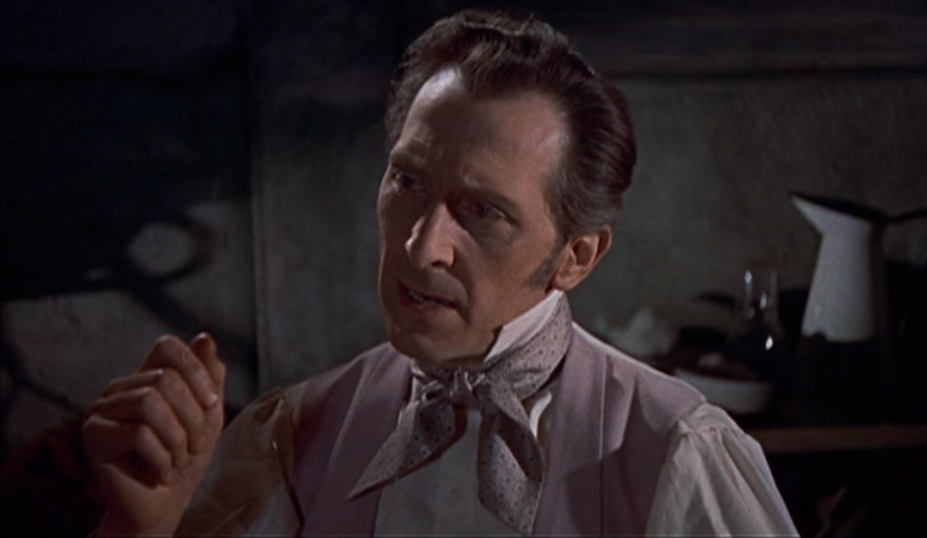Movie Review: The Revenge of Frankenstein (1958) directed by Terence Fisher
When last seen in The Curse of Frankenstein, Baron Frankenstein (Peter Cushing) had been condemned to the guillotine. At the beginning of this story, he’s being marched to his execution. We see the blade fall, but two grave robbers soon discover that the Baron has somehow cheated death.

Three years later in the German town of Carlstadt, a Doctor Stein is doing quite well for himself. Despite not having joined the Medical Council, Dr. Stein has attracted a number of rich clients, most hypochondriacs, and uses the fees to fund his work in the charity ward he’s set up. The Council is displeased that he won’t join (especially when he throws back in their faces that they refused him help when he first arrived), but doesn’t have the legal power to force him to join or stop him from practicing.
A younger member of the Council, Dr. Hans Kleve (Francis Matthews), realizes that he’s seen Dr. Stein before at a certain funeral, and confronts the older man with the fact that he’s in fact Baron Frankenstein. He’s willing to stay silent, on the condition that Dr. Stein take him on as an apprentice. Frankenstein is angry and affronted, but as it just so happens, he needs a competent assistant surgeon. A deal is struck.
Frankenstein has learned from past mistakes, and created a new creature that is far more aesthetically pleasing than his previous monsters. But for full success, he needs a living, uninjured brain to transplant into it. His lab assistant Karl (Michael Gwynn) has volunteered, as his current body is afflicted with a hunchback and partial paralysis.
The operation seems to be a success, and Karl is moved to an attic room above the poor ward to heal. Unfortunately, some poorly chosen words from Dr. Kleve upset the patient, and charity volunteer Margaret Conrad (Eunice Gayson) is tricked into loosening Karl’s bonds, and he escapes. Tragedy ensues.
This was an early entry in the Hammer horror series, and not quite as bloody or sexy as later films. Frankenstein is relatively nice in this one, perhaps having realized that his arrogance and coldness towards others in the previous movie caused much of his problems. He’s still obsessed with creating life from death, however. And with a bit more luck, he might have been acclaimed for his success, but instead becomes even more notorious.
Peter Cushing puts in a solid performance, and most of the cast does well. (There’s a scene with two young people who are theoretically out on a date that are clearly not as experienced as the majority of the actors.) Michael Gwynn has to work harder as his character specifically has trouble communicating.
Content note: A bit of violence–the goriest bits are when we see removed brains being placed in jars. People are insensitive towards Karl because of his physical disabilities. There’s a slightly racy scene where Dr. Stein is nagged into placing his ear against a young woman’s chest to hear her heartbeat. (She is way more into this than he is, Dr. Stein putting up with it due to the fat fee he’s getting.)
Overall, a good horror film of its time; people familiar with the Hammer reputation may find it surprisingly tame. Perhaps one for a family with teenagers.

